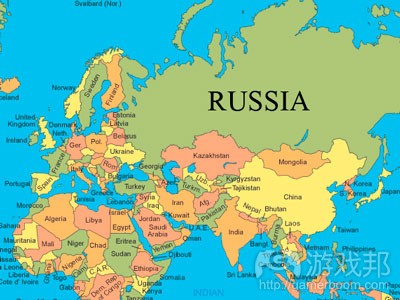分析俄罗斯游戏市场现状及潜在机遇
作者:Sande Chen
如今俄罗斯用户与20世纪90年代的西方市场非常相似。因为大多数在阅读这篇文章的读者已经很了解当前的西方市场,所以比起西方玩家基础,我将更加专注于前苏联国家(主要是俄罗斯,即作为最大且最经典的例子)的细微差别。
技术
东欧国家的技术渗透(游戏邦注:特别是在网络方面,特别对于游戏来说)远低西方国家,尽管其渗透速度正在逐渐加快。比起几乎实现100%宽频连接的美国,在俄罗斯只有43%的用户能在家上网,如果将手机设备也算在内的话应该是50%。游戏和主机的稀缺也影响着它们的价格,即在这里它们的价格是在美国的2倍。PC拥有者的比例仍然很高,尽管俄罗斯使用计算机的历史更长,但是在适应技术方面却远落后于西方国家。这便导致俄罗斯的游戏更倾向于PC和在线游戏而非主机,特别是那些能够下载且不会有太高系统要求的游戏。
可支配收入
俄罗斯人民的平均收入大约是每个月790美元(是白俄罗斯人民的2倍)。这还不到美国人们平均月收入的三分之一。尽管这里的食物消费相对较低,但制成品的价格却很昂贵,包括服装,汽车以及其它西方国家的必需品。即使食物消费较低,俄罗斯人民用于生活开支的比例仍非常高,大约是总收入的35%(在美国是6%)。高价格与低收入的结合导致这里人民的生活水平较低,人们对自己的工作和生活普遍持有不满意的态度。而对于游戏产业来说,这种情况将提升免费游戏以及盗版零售盒装游戏的受欢迎程度。
玩家情况
不像西方国家那样,即能看到越来越多的女性玩家的涌入,在俄罗斯仍有95%的玩家属于男性玩家。他们玩游戏主要是为了社交,进行消费体验,或者逃离艰苦的现实生活。俄罗斯人民会比世界上任何其它文化群组的人民更频繁地访问Facebook和vKontakte等社交媒体网站。对于许多人来说,通过网络与外部世界的联系便是他们的生命线。因为如此,包含社交元素的游戏将更受欢迎,特别是那些将竞争与合作作为主要功能的游戏。俄罗斯玩家是自然的部落搭建者。同样的,与西方国家(体育游戏很受欢迎,射击游戏是主流,其它类型则遭到了冷落)不同的是,俄罗斯玩家更愿意接受历史和策略游戏,而美国玩家则认为这类型游戏很烦人,特别是拥有与魔幻MMORPG一样的关卡时。
玩家文化
这里问题的关键在于玩家的期待值也都是不同的。高成本,低实用性以及盗版的结合意味着俄罗斯玩家更加精通技术,习惯于玩那些原本面向其它市场但却经过黑客破解,能够避开ISO而运行于虚拟驱动器上的游戏。甚至在他们想办法获得这类游戏时,他们也必须理解如何进行游戏,因为通过这样的方法所获得的游戏往往没有指南或支持。可以说他们是真正的黑客—-当他们发现了自己喜欢的游戏时,便会坚持地玩下去,并与朋友们一起游戏,不断传播。他们非常重视游戏。这里的硬核玩家起着主动作用,未来的发行商们应该牢牢记住这点。另一方面,免费游戏和在线游戏的发展意味着游戏更加亲近(盗版越来越少)与这一区域的大多数玩家,并减少了准入壁垒。
总之,你可以获得一些关键信息,即俄罗斯用户在使用当今技术时受到了约束,这里的网络渗透率相对较低,人们口袋里的钱较为紧张,产品的价格较高,生活较为艰难,他们愿意冒险去玩一些优秀的游戏,只要这些游戏足够便宜。就像我在一开始所说的,这就像是20世纪90年代的西方市场。但至少我们知道这一市场的发展方向,它也不需要花15年的时间才能追上西方市场!
(本文为游戏邦/gamerboom.com编译,拒绝任何不保留版权的转载,如需转载请联系:游戏邦)
In Russia, Game Play YOU!
by Sande Chen
The Russian-speaking audience of today is very similar to the Western market of the 1990’s. Since most people reading this are already familiar with the current Western market, I will focus on the nuances of the former-USSR (mostly Russia, being the largest and best example) rather than the Western player base.
Technology
The penetration of technology in general, and the internet in particular, especially for games, is much lower in Eastern Europe than in the West, although it is growing rapidly. While broadband connections are available to nearly 100% of Americans and over 80% of us use them, only 43% of Russians are online at home, up to about 50% when you include mobile devices. The rarity of games and consoles affects their price as well, and they cost about double here what they cost in the US. PC ownership is still fairly high, although Russians typically keep their computers longer and lag behind the West in early adoption of technology. This tends to focus games in Russia away from consoles and toward PC and online games, particularly games that can be downloaded and that don’t have high system requirements.
Disposable Income
The average income in Russia is around $790 per month (over twice what it is in Belarus!), which is less than a third of the US average. Although food costs tend to be fairly low, finished goods are expensive, including clothes, cars, and other goods considered necessities in the West. Even with the low prices for food, the proportion of income spent on subsistence remains quite high – around 35% of total income (vs. about 6% in the US). The combination of high prices and low income leads to a lower standard of living in general, and widespread dissatisfaction with work and life. For the game industry, this leads to increased popularity among free to play (F2P) games and extremely high levels of piracy for retail box games.
Gamer Profile
Unlike the West, where we are finally seeing more and more female gamers, the Russian gamer is still 95% likely to be male. They typically play for socialization, to experience consumption, and as an escape from their hard lives. Russians visit social media sites like Facebook and vKontakte far more often than any other cultural group in the world. For many, their connection to the outside world through the internet is their lifeline. Because of this, games that include a social aspect are popular, especially those that include competition and cooperation as primary features. Russian players are natural clan-builders. Also, unlike the West (where sports games are cool, shooters are mainstream, and everything else is shunned as nerdy), Russians see historical and strategy games as more acceptable, while Americans see these genres as even geekier, on practically the same level as fantasy MMORPGs.
Gamer Culture
The crux of the matter lies here, where player expectations are vastly different. The combination of high cost, low availability, and piracy mean that Russian gamers are more tech-savvy, used to playing games made for other markets that have been hacked and are run from an ISO on a virtual drive. Even after they manage to get the game, they have to figure out how to play it, with no manual and no way to contact support. They’re true hackers – and once they find a game they like, they stick to it, play it with their friends, and pass it around. They take their gaming seriously. The hardcore gamer drives the Siberian Express over here, and prospective publishers should keep that in mind. On the other hand, the growth of F2P and online games means that games are becoming more accessible to (and less pirated by) more players in this region, reducing barriers to entry.
So there you have it. The Russian audience has limited access to current technology, internet penetration is relatively low, money is tight, prices are high, life is hard, and they are willing to crawl across broken glass to play good games, as long as they’re cheap. As I said at the beginning, this is very much like the Western market of the 1990’s. But at least we know exactly where this market is headed, and it won’t take them 15 years to catch up!(source:blogspot)








































 闽公网安备35020302001549号
闽公网安备35020302001549号